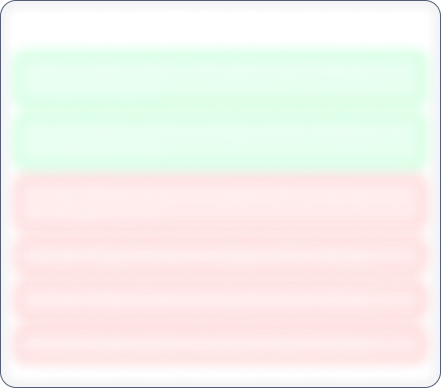Year End Sale 50% off
National Securities Depository

No Data Available
Investor Sentiment
National Securities Depository Share price and Fundamental Analysis
Key Metrics
Included In
Stock Returns
Stock Heatmap

No Stocks
Smart Score

Unlock Smart Score
See Detailed Analysis & Insights


Unlock Insights
See Detailed Analysis & Insights
Technicals
Returns Calculator
If you would have investedResearch Report
No Research Report
Corporate Action

No Data Available
Financials
Key Ratios
ROE
Avg ROE (3 Yrs) : NaN%
ROCE
Avg ROCE (3 Yrs) : NaN%
ROA
Avg ROA (3 Yrs) : NaN%
NPM
Avg NPM (3 Yrs) : NaN%
Dividend History
5 Year FactSheet
Documents

No Data Available
News
National Securities Depository Management and History
Company Management


Unlock Management Data
See Detailed Analysis & Insights
Company History
National Security Depository Ltd. was incorporated on April 27, 2012, as 'NSDL Depository Limited' at Mumbai as a Public Limited Company pursuant to a Certificate of Incorporation. The Company is a SEBI registered market infrastructure institution (MII) offering a wide range of products and services to the financial and securities markets in India. The Company commenced operations through a Certificate of Commencement of Business dated May 16, 2012, issued by the RoC.
The depository business has been in operation for more than 26 years, having commenced in November 1996, with the name 'National Securities Depository Limited', which later on was renamed as NSDL e-Governance Infrastructure Limited and is currently known as Protean eGov Technologies Limited. Following introduction of the Depositories Act in 1996, the Company pioneered dematerialization of securities in India in November 1996. Through Scheme of Arrangement, the depository undertaking was demerged from Protean and transferred and vested into with Company, as a going concern. Resulting to Scheme of Arrangement, name of Company was changed from 'NSDL Depository Limited' to 'National Securities Depository Limited', vide a fresh Certificate of Incorporation issued by the RoC, on January 3, 2013. As of now, NSDL are the largest depository in India in terms of number of issuers, number of active instruments, market share in demat value of settlement volume and value of assets held under custody.
As a depository, Company provide a robust depository framework that enables market participants to participate in the financial and securities markets in India. Their depository facilitates securities to be held in digital form by investors through accounts known as 'Demat Accounts' held through depository participants. This includes securities held in dematerialized form with various asset classes namely equities (listed equity and unlisted equity), preference shares, warrants, funds (mutual funds, REITs, InvITs and AIFs), debt instruments (corporate debt, commercial paper, certificate of deposit, pass through certificate, security receipts, government securities, sovereign gold bonds, municipal debt, treasury bill) and electronic gold receipts.
As part of depository business, NSDL operate a centralized digital book-keeping system that facilitates the holders of securities to hold and transfer their securities in electronic form and enables settlement solutions in an efficient and cost-effective manner. It maintain complete records of the ownership of securities held in dematerialised form with them on behalf of the issuer entity. It provide depository services to investors, issuers, depository participants, financial institutions, stockbrokers, custodians, clearing corporations and other market intermediaries and have established an ecosystem for these entities to integrate with their systems.
In October 2018, the Company launched a facility for availing digital loans against securities; in 2021, it launched digital commercial paper issuance process. During FY 2022, it launched blockchain based market platform to monitor security and covenants related to issuance of bonds.
The Company is proposing an Initial Public Offer of 57,260,001 Equity Shares through Offer for Sale.
National Securities Depository Share Price
National Securities Depository share price reflects investor sentiment toward the company and is impacted by various factors such as financial performance, market trends, and economic conditions. Share price is an indicator which shows the current value of the company's shares at which buyers or sellers can transact.
National Securities Depository Market Cap
Market capitalization of National Securities Depository indicates the total value of its outstanding shares. Marketcap is calculated by multiplying share price and outstanding shares of the company. It is a helpful metric for assessing the company's size and market Valuation. It also helps investors understand how National Securities Depository is valued compared to its competitors.
National Securities Depository PE Ratio
National Securities Depository PE ratio helps investors understand what is the market value of each stock compared to National Securities Depository 's earnings. A PE ratio higher than the average industry PE could indicate an overvaluation of the stock, whereas a lower PE compared to the average industry PE could indicate an undervaluation.
National Securities Depository PEG Ratio
The PEG ratio of National Securities Depository evaluates its PE ratio in relation to its growth rate. A PEG ratio of 1 indicates a fair value, a PEG ratio of less than 1 indicates undervaluation, and a PEG ratio of more than 1 indicates overvaluation.
National Securities Depository ROE (Return on Equity)
Return on Equity (ROE) measures how effectively National Securities Depository generates profit from shareholders' equity. A higher ROE of more than 20% indicates better financial performance in terms of profitability.
National Securities Depository ROCE (Return on Capital Employed)
Return on Capital Employed (ROCE) evaluates the profitability of National Securities Depository in relation to its capital employed. In simple terms, ROCE provides insight to investors as to how well the company is utilizing the capital deployed. A high ROCE of more than 20% shows that the business is making profitable use of its capital.
National Securities Depository Total Debt
Total debt of National Securities Depository shows how much the company owes to either banks or individual creditors. In simple terms, this is the amount the company has to repay. Total debt can be a very useful metric to show the financial health of the company. Total debt more than equity is considered to be a bad sign.
National Securities Depository Debt to Equity Ratio
The Debt-to-Equity (DE) ratio of National Securities Depository compares its total debt to shareholders' equity. A higher Debt to Equity ratio could indicate higher financial risk, while a lower ratio suggests that the company is managing its debt efficiently.
National Securities Depository CAGR (Compound Annual Growth Rate)
CAGR shows the consistent growth rate of National Securities Depository over a specific period, whether it is over a month, a year, or 10 years. It is a key metric to evaluate the company’s long-term growth potential. Main metrics for which CAGR is calculated are net sales, net profit, operating profit, and stock returns.
National Securities Depository Technical Analysis
Technical analysis of National Securities Depository helps investors get an insight into when they can enter or exit the stock. Key components of National Securities Depository Technical Analysis include:
Support Levels (S1, S2, S3)
There are usually multiple support levels, but the main support levels for a stock are S1, S2, S3. Support levels indicate price points where stock might get support from buyers, helping the stock stop falling and rise.
Resistance Levels (R1, R2, R3)
There are usually multiple resistance levels, but the main resistance levels for a stock are R1, R2, R3. Resistance levels represent price points where National Securities Depository shares often struggle to rise above due to selling pressure.
National Securities Depository Dividends
Dividends refer to the portion of the company’s profits distributed to its shareholders. Dividends are typically paid out in cash and reflect National Securities Depository ’s financial health and profitability.
National Securities Depository Bonus Shares
Bonus shares are usually given by companies to make the stock more affordable, increase liquidity, boost investor confidence, and more.
National Securities Depository Stock Split
Stock split increases the number of its outstanding shares by dividing each existing share into multiple shares. When the company offers a stock split, the face value of the stock reduces in the same proportion as the split ratio.
National Securities Depository Financials
The financials of National Securities Depository provide a complete view to investors about its net sales, net profit, operating profits, expenses, and overall financial health. Investors can analyze financial data to assess the company’s stability and also understand how the company has been growing financially.
National Securities Depository Profit and Loss Statements
The profit and loss statement of National Securities Depository highlights its net sales, net profit, total expenditure, and operating profits in the current financial year. This Profit and Loss statement is crucial for evaluating the profitability and financial stability of National Securities Depository .
National Securities Depository Balance Sheet
The balance sheet presents a snapshot of National Securities Depository ’s assets, liabilities, and equity of shareholders, providing insights into the financials of the company.
National Securities Depository Cashflow Statements
Cashflow statements track the company's cash inflows and outflows over a period. It is an essential tool for understanding how well the company manages its liquidity and finances.


